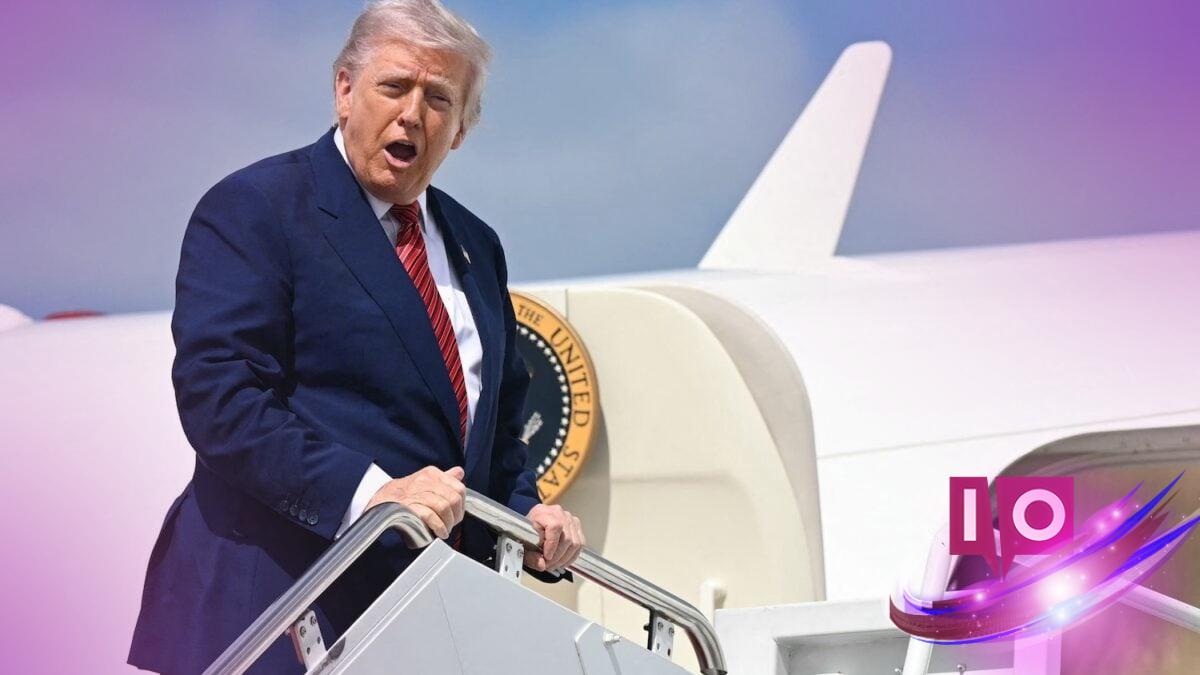In a recent incident involving President Trump traveling aboard Air Force One to the United Kingdom, a Spirit Airlines flight had an unexpected encounter in the skies. As Air Force One flew over Long Island, it got alarmingly close to a Spirit Airlines jet bound for Boston.
The New York Times reported that air traffic control had to issue repeated warnings to the Spirit flight. An air traffic controller was heard instructing the pilot to “get off the iPad” and pay better attention to navigation. It’s unclear if the pilot was indeed distracted.
What Happened Between Air Force One and Spirit Airlines Flight?
Initial communication from the tower directed Spirit flight 1300 to turn 20 degrees right. However, the pilot appeared to miss these instructions, prompting air traffic control to reiterate the direction multiple times. The urgency escalated as the controller remarked, “I got to talk to you twice every time” and again, urged the pilot, “Get off the iPad.”
How Close Did the Planes Come?
According to flight data from Flightradar24, the Spirit flight was about 11 miles from Air Force One when the pilot finally adjusted the path. Ultimately, the planes came within eight lateral miles of each other, a distance that quickly shrinks when considering commercial jets travel at speeds exceeding 500 mph.
What Did Spirit Airlines Say?
In response to inquiries, Spirit Airlines stated:
“Spirit Airlines flight 1300 (FLL-BOS) followed procedures and Air Traffic Control (ATC) instructions while en route to Boston (BOS) and landed uneventfully at BOS. Safety is always our top priority.”
What is the FAA’s Position?
The Federal Aviation Administration (FAA) acknowledged awareness of the social media discussions surrounding the event. They confirmed that “required separation was maintained between the aircraft,” assuring that safety protocols were followed.
What are the Safety Concerns in the Airline Industry?
Recent scrutiny regarding airline safety has intensified due to various incidents involving manufacturers like Boeing. Notably, the New York Times reported that “near collisions” between commercial jets occur almost weekly. A report by the National Academies of Sciences highlighted that while some FAA air traffic control centers are overstaffed, significant staffing shortages exist at others, contributing to potential safety risks.
Have near-collisions between planes increased in the last few years? Yes, data indicates that incidents are becoming more common, raising alarm among aviation safety experts.
How does air traffic control ensure aircraft separation? Air traffic control employs a series of protocols and real-time communication measures to maintain safe distances between aircraft at all times.
What should passengers know about flight safety? Understanding that airlines prioritize safety and adhere to strict regulations is vital. Incidents are taken very seriously, and measures are continually evaluated to enhance safety standards.
In this digitally connected age, it’s critical for passengers to stay informed about air travel safety. The recent interaction between Air Force One and Spirit Airlines serves as a stark reminder of the importance of vigilance in aviation. For more insights on air safety and travel, check out Moyens I/O.
